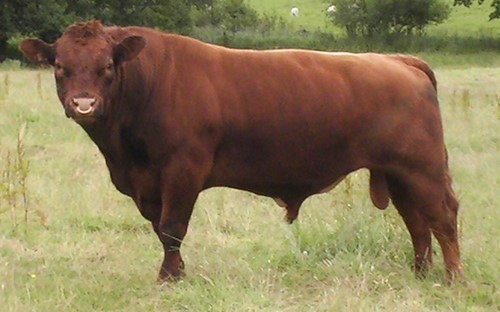Shorthorn cattle originated in the Tees River Valley in the
northeastern part of England in the counties of Northumberland, Durham, York,
and Lincoln. They were brought to America in 1783 and were popular with
America's early settlers.
The American Shorthorn Herd Book was published in 1846 and
was the first registry for any breed in the US. Over 30 other breeds of cattle
show traces of Shorthorn in their parentage, including Santa Gertrudis, Angus,
and Milking Shorthorns.
Although their color ranges from red to roan to white, roan
(a mixture of red and white) and red are the predominant colors. They are
medium-size cattle. They have a rectangular shape with a short, broad head and
wide set eyes. And they have short horns. Shorthorns are known for their early
maturity, adaptability, mothering ability, reproductive performance, hardiness,
good disposition, feed conversion, and longevity. In the feedlot, these cattle
attain 1,000 to 1,200 pound weights at an early age and have no trouble
producing carcasses that grade choice.

